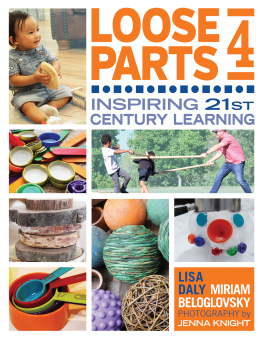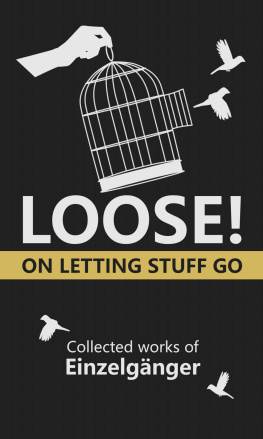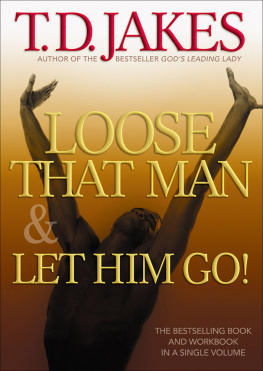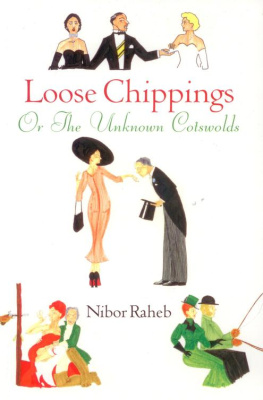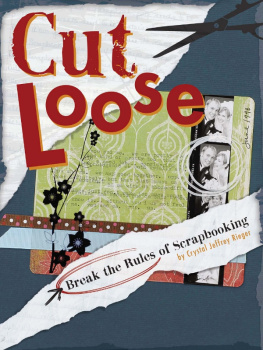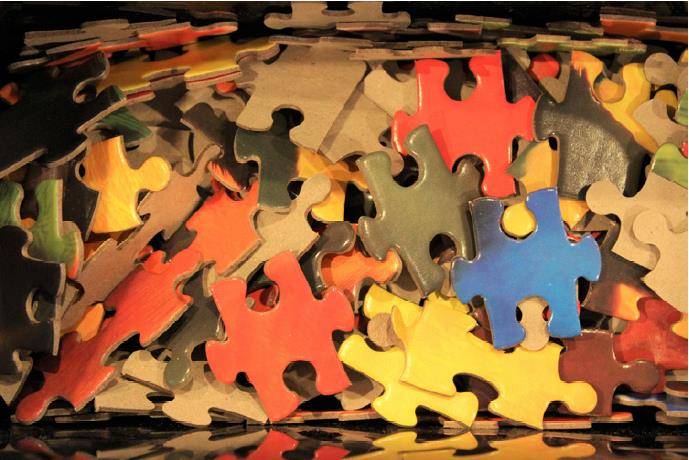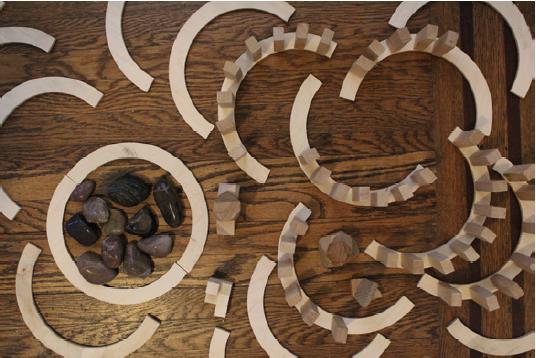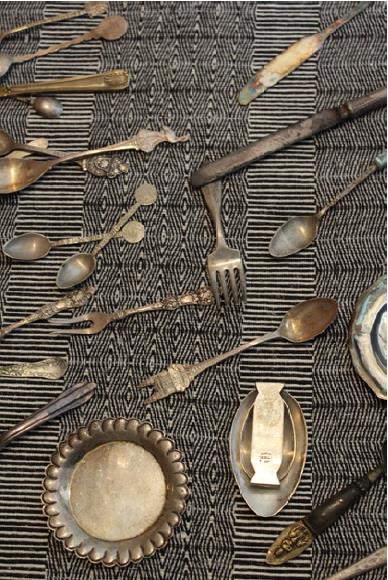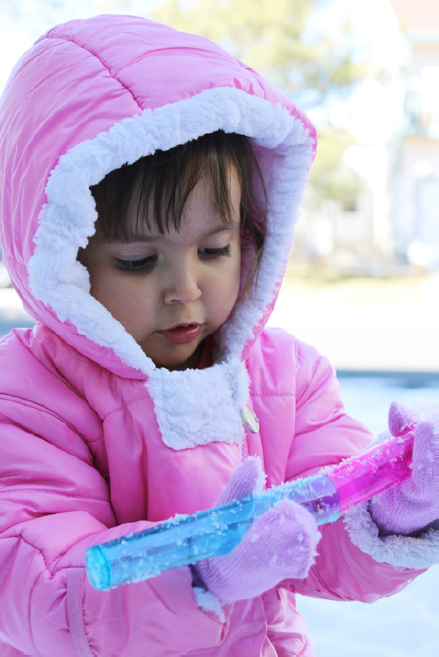
Loose Parts 4
INSPIRING 21ST-CENTURY LEARNING
Lisa Daly and Miriam Beloglovsky Photography by Jenna Knight

Published by Redleaf Press
10 Yorkton Court
St. Paul, MN 55117
www.redleafpress.org
2020 by Lisa Daly and Miriam Beloglovsky
All rights reserved. Unless otherwise noted on a specific page, no portion of this publication may be reproduced or transmitted in any form or by any means, electronic or mechanical, including photocopying, recording, or capturing on any information storage and retrieval system, without permission in writing from the publisher, except by a reviewer, who may quote brief passages in a critical article or review to be printed in a magazine or newspaper, or electronically transmitted on radio, television, or the internet.
First edition 2019
Senior editor: Heidi Hogg
Managing editor: Douglas Schmitz
Cover design: Renee Hammes
Cover and interior photographs: Jenna Knight
Interior design: Erin Kirk New
Typeset in Berkeley Oldstyle Book
Printed in the United States of America
Library of Congress Cataloging-in-Publication Data
Names: Daly, Lisa, author. | Beloglovsky, Miriam, author. | Knight, Jenna, photographer.
Title: Loose parts 4 : inspiring 21st-century learning / Lisa Daly and Miriam Beloglovsky ; Photography by Jenna Knight.
Other titles: Loose parts four
Description: First edition. | Saint Paul, MN : Redleaf Press, [2020] | Includes bibliographical references and index. | Summary: In the newest installment of the popular, award-winning Loose Parts series, Lisa Daly and Miriam Beloglovsky focus on family engagement and competency building. Lisa and Miriam explain the value of loose parts, detail how to integrate loose parts into the environment and childrens play, and specifically focus on loose parts for children in family environmentshelping educators engage families and extend learning beyond the classroom Provided by publisher.
Identifiers: LCCN 2019024276 (print) | LCCN 2019024277 (ebook) | ISBN 9781605545899 (paperback) | ISBN 9781605545905 (ebook)
Subjects: LCSH: Play. | Early childhood educationActivity programs. | Creative activities and seat work.
Classification: LCC LB1139.35.P55 D37 2020 (print) | LCC LB1139.35.P55 (ebook) | DDC 372.21dc23
LC record available at https://lccn.loc.gov/2019024276
LC ebook record available at https://lccn.loc.gov/2019024277
To all who love to play
To all who love to learn
To all who embrace change
To all who believe in a hopeful future
Contents
Acknowledgments
My hope is that with this book, we change the discourse in education from childrens readiness to childrens success. This hope became visible through ongoing conversations with my supportive friends. I dedicate this book equally to all of themMichael Leeman, Annie White, Michelle Grant-Groves, Jeannette Mulhern, Tim Craig, Heidi Brahms, Chris Marks, Darcelle Lahr, Laurel Doyle, Larrisa Wilkinsonand to all of the educators who devote their time and energy to advocate for childrens right to play. I am honored to be the mother of two incredible daughters who, in their own way, fight every day for equity and justice. I am also in awe of my great-niece Dominique Leibman for her willingness to speak up and stand up for what is right. She gives me hope for a future where social justice is embraced and equity exists for everyone. I want to thank the staff at Redleaf Press for their commitment to quality, which is always inspiring. Miriam Beloglovsky
As with all our books, there are many people who collaborated with us from idea to reality. My special appreciation goes out to the following people who graciously allowed us to capture their children at play and opened their homes for photography: Angela and Jules, Ashley and Will, Bob and Erica, Eddie, Heidi, Jarred and Emily, Jenn and Chris, Lance, and Mary. As always, my family, friends, and colleagues have been a tremendous support throughout the writing of this book. I thank you all for your generous encouragement, reflection, and dedication. Jenna, thank you for once more capturing inspiring photographs. I want to acknowledge Miriam for her contributions to the Loose Parts series . It has been an amazing journey. To all those at Redleaf Press, thank you for your vision, support, technical expertise, and creativity. May this book inspire educators, families, and policy makers to advocate for play-based learning and make play a priority in the lives of children. Lisa Daly
Part 1
Introduction to Loose Parts for the Twenty-First Century
The twenty-first century has brought constant change and demands for education that go beyond academic readiness. Through a play-based approach with loose parts, children will cultivate the knowledge, capacities, and dispositions to thrive as adults in a global society and face the challenges of an unknown future.
Every new generation of children faces a future world that we cant yet imagine. Children born today may not experience using paper currency, hardcover books, or cursive handwriting, or learning how to drive a car. Our society and technology are advancing at such a rapid pace that imagining whats on the horizon for our childrens future is difficult. Upon adulthood every generation encounters changes in life that bring joy but also often come with criticism, uncertainty, rejection, and failure. How you tackle these obstacles will determine how you succeed in life. A major goal of both teaching and parenting is to prepare children for life, but what really matters?
One may believe that achievement and happiness are critical to being successful in the future, but who defines success? Success is often defined in terms of wealth or fame, but this definition seems rather narrow. For many individuals, obtaining a medical degree or becoming a professional athlete are signs of achievement, but arent there unhappy doctors and athletes in the world? An early childhood educator may be fulfilled working with young children, but if prosperity is defined as financial gain, the low wages of an educator do not qualify as affluence. Looking at our educational system, we can clearly see that we value skill building for our children; after all, they need to be prepared to enter the workforce with marketable skills. But is this enough to be successful?
What children need more than skills and success is to build capacities. Skills are abilities, either physical or mental, that are inherent or acquired. Capacities, on the other hand, involve the potential to develop skills and the power to learn. Capacity building involves strengthening an individuals ability to hold, receive, or absorb. Everyone has the potential to build capacities. Capacity allows you to grasp change effectively, which is important for handling unforeseen possibilities. Young children can be properly prepared for the future by developing their full capacities for creativity, critical thinking, and active engagement in the world. Through open-ended play, children develop capacities for imagination, compassion, empathy, learning, resourcefulness, respect, initiative, vision, and sustained purpose, and for examining problems, and constructing solutions. Our goal as educators and as parents is to help all the children in our lives learn who they are so that they may go forward into adulthood with the confidence that they are equipped to thrive.
Next page
